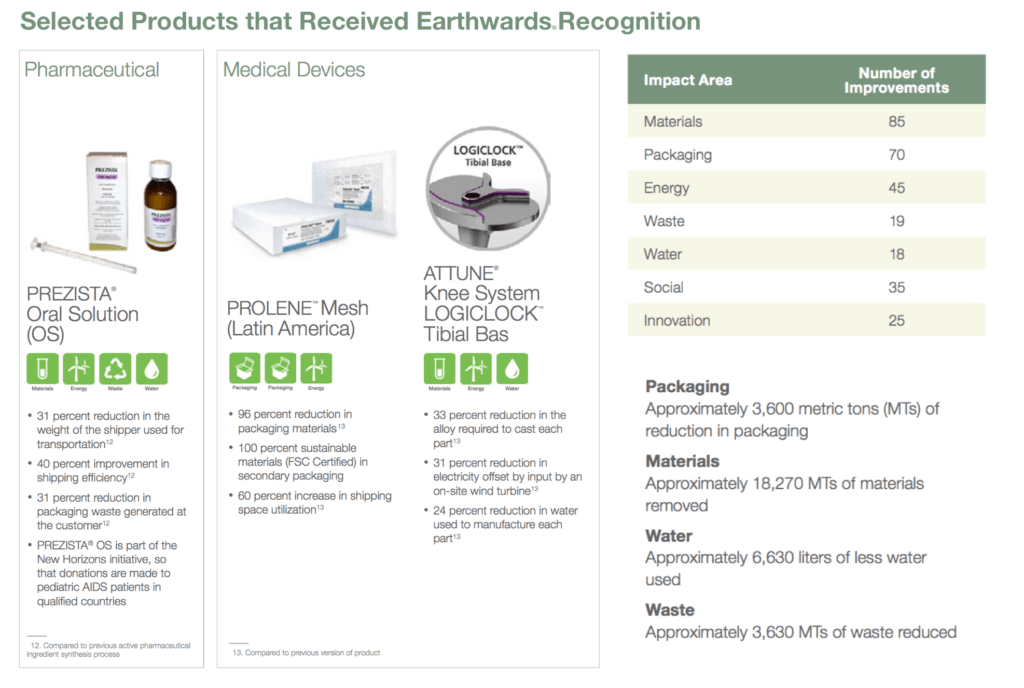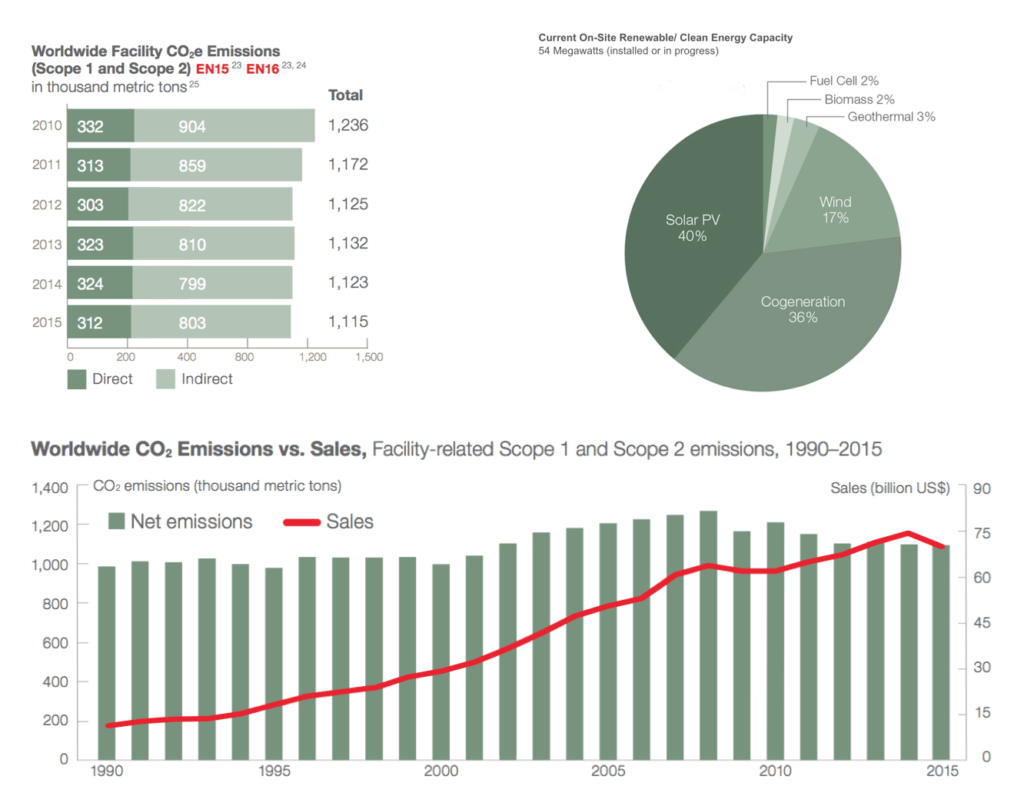Health Care without Harm

Healthcare companies are large energy consumers and major emitters, while they are also positioned as the front line of the response to the increasing health threats. Climate change arouses both operation challenges and business opportunities: How could these companies help people address the increasing health threats caused by climate change without further damaging the environment?
Climate change is one of the biggest global health threats of the 21st century, according to a report by the Lancet/UCL Commission on Health and Climate Change (1).
As climate change alters environmental conditions, the prevalence and global distribution of human diseases are changing, new disease threats are emerging, substantially higher pharmaceutical/medical device use appears inevitable. This brings both challenges and opportunities for many healthcare companies.
How could these companies help people address the increasing health threats caused by climate change without further damaging the environment? I would like to use Johnson & Johnson (J&J), the company I worked for six years before, as an example to explain.
1. Climate change is impacting global human health
According to the WHO’s reports on the potential impacts of climate change on public health (2), some adverse impacts climate change has on human health may include:
- More frequent extreme heat waves and associated air quality issues contribute to and exacerbate cardiovascular and respiratory diseases.
- Floods, droughts, and contaminated water raise the risk of diarrhoeal disease.
- Changes in temperature, rainfall, humidity, flooding and other climatic conditions create an opportunity for the spread of vector-borne infectious diseases such as malaria.
 Figure 1: Impact of Climate change on human health (3)
Figure 1: Impact of Climate change on human health (3)
2. Why it matters to Pharmaceutical and Medical Device companies?
Pharmaceutical and medical device companies are large energy consumers and major emitters, while they are also positioned as the front line of the response to these threats (4). This arouses both operation challenges and business opportunities.
2.1 Operation challenge: Reducing carbon footprint.
The carbon footprint of healthcare companies is huge. In the UK, for example, around 20% of the NHS’s carbon footprint is related to pharmaceutical products (according to a 2013 report by the NHS Sustainable Development Unit). At the same time, the risk to the environment of pharmaceutically active by-products excreted by patients is largely unknown. (5)
This raises new challenges for J&J’s business operation. The company needs to consider how to reduce carbon footprint and waste during its business expansion.
2.2 Business opportunities: tackling the health impacts of climate change
Governments and healthcare companies are the front lines of the response to health threats caused by climate change. They need to look into improving access to effective treatments for diseases and conditions that are likely to be exacerbated by climate change, especially in developing world – for example, Southeast Asia and Africa.
J&J, as a leading company in pharmaceutical and medical device sector, thus has the obligation to tackle the health impacts of climate change, mitigating the consequences of climate change on the health of the world’s population.
3. J&J’s actions to deal with climate change
3.1 Build a sustainable health system, develop “Green product”
A sustainable health and care system works within the available environmental and social resources protecting and improving health now and for future generations. This means working to reduce carbon emissions, minimizing waste and pollution, making the best use of scarce resources, building resilience to a changing climate and nurturing community strengths and assets.
Earthwards® is the Johnson & Johnson approach for developing innovative and more sustainable products. This approach defines how they think about product life cycles—includes considering opportunities to apply green chemistry principles, improve the sustainability of our packaging, and reducing end-of-product-life impacts through recycling and reprocessing of used equipment.
Within five years of launching Earthwards®, J&J made significant improvements on 80 products in 2015. The improvements from product and selected products can be seen in the following graph (6).
3.2 Reduce greenhouse gas emissions
The company took actions in many areas to reduce greenhouse gas emissions, including reducing CO2 emissions, using renewable energy in production, building green buildings, and also reducing shipping-related CO2 Emissions to minimize transportation impact on environment.
In J&J’s 2015 annual sustainability report, the company mentioned that they realized a 9.8 percent absolute reduction in facility CO2 vs. 2010 baseline, increased on-site clean- technology energy capacity to 54 MWs, and realized 20 percent improvement in vehicle emissions efficiency (7)
4. Move Forward
Based on the analysis above, I think climate change brings both operation challenges and business opportunities for J&J. The company has realized the great impact that climate change generates on the industry and the company, and has already taken many actions to build a more sustainable and environment-friendly operation model. In the future, I think the company should continue reducing emissions from facilities, R&D, manufacturing and transportation, while at the same time, I believe the company has the obligation to stimulate the innovation and R&D to respond to health threats caused by climate change, through collaborations with government and other pharmaceutical/medical device companies within industry.
Word Count: 764
Sources:
(1) The Lancet: Managing the Health effects of Climate Change, http://www.thelancet.com/commissions/climate-change
(2) WHO: Climate change and health, http://www.who.int/mediacentre/factsheets/fs266/en/
(3) Impact of Climate Change on Human Health https://toolkit.climate.gov/image/505
(4) How can the pharma industry fight climate change, http://www.pharmaceutical-technology.com/features/featurehow-can-the-pharma-industry-fight-climate-change-4814240/
(5) Time to act: pharmacists must be prepared for environmental changes, http://www.pharmaceutical-journal.com/opinion/time-to-act-pharmacists-must-be-prepared-for-environmental-changes/11138390.article
(6) (7) Johnson & Johnson 2015 Citizenship & Sustainable Report, http://www.jnj.com/sites/default/files/pdf/cs/2015-JNJ-Citizenship-Sustainability-Report.pdf





Nice, we cited the same study showing 20% of NHS’s carbon footprint being related to the pharmaceutical industry. As medicine becomes advanced, I wonder how this will affect the dumping of harmful active by-products. For example, would an increased use of biologics reduce the use of toxic chemotherapies?
I absolutely agree that companies like J&J which have large portfolio of consumer health products are well positioned to support disaster relief efforts. I just hope the emissions costs of transportation to remote regions are given a “lighter” look for the humanitarian value they give.
I agree that J&J, like other companies, could improve on knowledge sharing and collaborating on reducing their greenhouse gas emissions. This is simply a win for everyone and not a conflict of interest.
Having come from a health care “industry” prior to attending HBS I wholeheartedly agree that, independent of other sectors, health care consumes a huge amount of energy. Hospital’s themselves are 24 hour institutions which run continuously 365 days a year. The “products” which come from these operations, too, are often hard to quantify. Given these constraints, I find myself wondering how we can cut energy consumption at the hospital level and not negatively affect patient care. We’ve learned that many sustainable implementations actually lower costs to consumers, but when you consider an industry like pharmaceuticals, is it possible to put in place “greener” practices without passing those costs onto patients?
Very nice post Ting! As a clinician, it’s extremely hard to be cognizant of your carbon footprint. Between managing patients, rendering care, leading teams, and managing the business aspects of a practice, reducing waste in your practice can become an afterthought. In practice, hundred of pairs of plastic gloves, patient bibs, and disposable materials go straight to the trash. The hard part about managing this waste is that virtually none of it can be recycled because it potentially has contaminants from patient contact. There could be ways to recycle these materials while getting rid of potential microbes and pathogens –we just need the technology! Beyond this there’s definitely low-hanging fruit that can be addressed by both hospitals/clinics and supply companies. Better coordination in terms of demand and storage information can allow manufacturers to send materials in bulk, thereby reducing transportation costs. Simple, resource-efficient packaging would also reduce the wasted associated with medical products. On the medical side -I would argue that further investment in biomedical research is necessary, as advancements in medical and surgical technology has the potential to reduce hospital admissions and their associated carbon footprint.
Thanks Ting for bringing up the issue of GHG emissions in healthcare industry. I found lots of similarities between phamaceutical products and consumer products in terms of GHG reduction. The opportunities exist across supply chain, including how we source raw material, how we produce and package our products, how we transport and store them and finally how we sell them. And I think it’s a smart thing for companies to focus on GHG emission reductions on supply chain, because that will also become the biggest cost saving driver for the company and to optimize its current operations in order to improve bottomline
Nice post, Ting! I understand pharmaceutical companies may want to invest in eco-friendly initiatives to reduce their carbon footprint, but I am skeptical these companies will make this priority until regulation forces them to do so. Similar to our discussion in class, without having an urgent need to make these investments, the eco-friendly initiatives may be seen as a “nice-to-have” rather than a “need-to-have”. I am interested in next steps the government will take to make climate change an important business issue for all organizations.
Thank you very much for this interesting article. Having spent time working in hospitals, one thing that really strikes me is the wastage of physical materials. In particular, the wrapping around medical products, and the disposable medical products themselves. As you mentioned in section 3.1, as a medical device manufacturer, J&J could make great strides in looking to increase the sustainability of its packaging, and perhaps looking into ways of producing devices that are less wasteful (eg. using less physical materials, and recycle materials within the devices themselves). An interesting point worth considering is that as you noted, healthcare will be effected by climate change. Can J&J look to capitalize on this financially and socially, by for instance working on developing drugs that will treat conditions whose incidence will increase as a result of climate change.